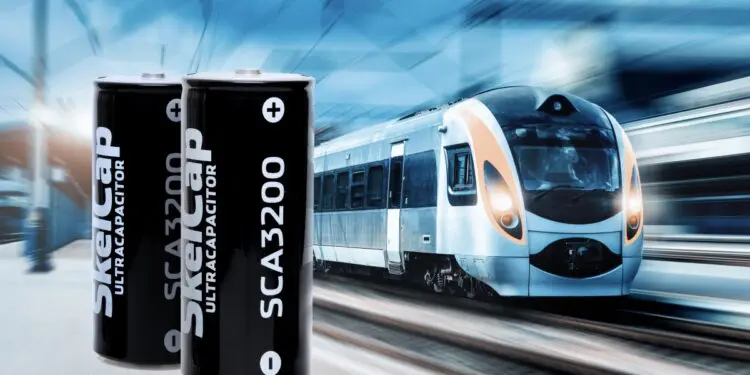Skeleton Technologies has signed a contract withCAF Power & Automation, the global manufacturer of electric power solutions for the rail industry, to supply ultracapacitors in trams powered by CAF P&A’s OESS-s (On Board Energy Storage Systems). Skeleton’s cells will be included in Greentech OESS portfolio already used by some of the leading railway companies worldwide to offer cutting edge solutions to energy recovery, peak shaving and catenary-free applications.
As energy efficiency is now the key design criteria for any public transportation system, ultracapacitors are ready to significantly contribute to the rail industry. Headquartered in Donostia – San Sebastian (Spain), CAF Power & Automation has chosen Skeleton Technologies to supply ultracapacitor cells to its Greentech OESS-s pointing out multiple innovative purposes: The ultracapacitor technology can significantly improve trams efficiency – reducing costs and CO2 emissions, it can also enable compatibility between existing limited power in infrastructure and the demand of high peaks of power of modern trams, and finally it enables a unique solution for 100% catenary free solutions operating only with ultra-fast charging in stations.
“Skeleton’s cells offer very high efficiency and low heat losses, and their high-power density enables further weight and space savings. Therefore, they are a perfect fit to the rail and tram industry. Adding them to our energy storage systems will greatly benefit our existing and future customers, allowing to maximize energy efficiency at an unprecedented level.” CAF Power & Automation explains.
Taavi Madiberk, co-founder and CEO of Skeleton Technologies says: “In terms of public transportation, trams are already a very energy-efficient solution. However, our ultracapacitors can take them to the next level allowing the maximum energy recovery. We are very glad to now collaborate with CAF Power & Automation and supply our cells to make trams that use their energy storage systems some of the most modern, cost and energy-efficient in the world. Our ultracapacitors are already the most advanced ones on the market but thanks to our curved graphene material, we are planning to increase our advantage even further, offering more reliable, long-life alternatives to high-power batteries.”
Skeleton’s cells will be integrated into Greentech OESS-s, which are already powering trams in dozens of countries including the UK, Australia, Estonia, Luxembourg, and Spain.


































